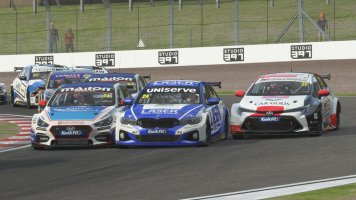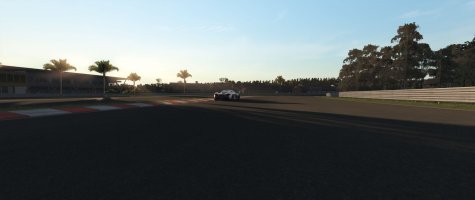As the Hz rise you are losing bass energy, this is what you see on the chart above for the rectangles for the different frequency bands. Using high Hz constantly may cause a unit to overheat as the piston is operating with higher cycles.
The sensation you seek is possible, with a combination of effects that would operate via engine rpm, speed and acceleration g-force. I believe it would require a mixture of low-mid bass and high-frequency detail to make it more exciting and convincing. What you need to take into account is that harmonics are also naturally created.
So if an effect layer was created using 60Hz and input as the small/low value and 80Hz input as the big/large value in Simvibe. These are the "center values". Other frequencies will also be included. The secondary harmonic of these values will be generated naturally. This would be the 1st overtone of the frequencies.
In this case being 120Hz and 160Hz but also containing +/- frequencies of the center values.
Harmonics will be lower in dB to the original fundamental tones. We can increase the db for the original fundamental values to then also increase the dB of the harmonics they produce but we dont then want the fundamental tones to be too strong or overbearing in the attempt to increase others.
An alternative is EQ to boost the 80-100Hz + but really this may not do a great deal (unit dependent). Keep in mind you are trying to boost bass in a frequency that has little bass and this be generated on a transducer. What I would say you want is more supporting frequencies to give more body and depth to the sensations.
Another option would be a secondary or triple effect layer that then uses the "harmonic values" of the 1st layers fundamental frequencies.
Simvibe - Creating Harmonic Layers
You could try a speed effect that uses more than one layer but being harmonically matched.
This means the layers will have their own center values inputted that match naturally created harmonics. You then can alter the amplitude/gain of each layer to find a balance for the effects full operation.
Layer 1 = 30Hz & 40Hz (Original fundamental tones used are also known as the 1st harmonic)
Layer 2 = 60Hz & 80Hz (2nd teir harmonic)
Layer 3 = 90Hz & 120Hz (3rd teir harmonic)
- Test each layer on its own to find suitable volume so all 3 can have a nice balance
- Frequencies above, only examples of using a harmonic method for layers
- The sml/big values do not necessarily need to be 20Hz apart
Alternative Option
I believe that SBS is soon going to allow much greater potential than Simvibe with the updates it has coming. Even currently it performs rather well in comparison to Simvibe and does several things not possible in Simvibe. It also is donation based software so will not set people back $89.
My advice to anyone currently using tactile is to give (Shakeit Bass Shaker) a try to compare it using Speed/RPM & also if you wanted include an acceleration G Force effect. Below are some settings I find work well. You could try these and alter slightly the Hz if you wanted to suit your BK Gamer. It really is much less frustrating to use than Simvibe and brings better control/options than SSW.
It certainly surprised and pleased me with all the updates/features it has had and continues to bring. But heck why not find out for yourself....



Available via the SIMHUB software package.
Here
Simvibe, while we can get creative with effects layer creation, has a basic/outdated UI and adding layers for a specific detail or creative sensation just becomes messy with no way to organise or label the layers.
When we add layers or multiple effects that use the same Hz then this increases the dB of the frequencies. One problem is with multiple effects and then multiple layers you can create an output for the channel that everything becomes hard to distinguish specific effects sensations.
Tactile Unit Overworked
Keep in mind an engine or speed related effects are almost operating constantly is best used on a tactile unit(s) specifically for engine role. Then use other additional units for bumps etc to maintain better detailing and not overwhelm one unit.
For best engines, again a BK and TST combo is what has worked best for me. However when you combine more than one unit for a "Dual Role" operation it's better to have an amp or method to control the operating crossover of each unit to get them to work better together or the units to be focused on their individual roles (strong bass / improved detail).
Seeking Higher Performance?
Currently, the Behringer NX3000D is the amp you should consider as this not only lets you control the crossover but also apply an EQ to each unit. The BK Concert and a TST 209 or TST239 will work REALLY well for engines if you desire lots of energy and depth.
For engines, my own upcoming build will rely on:
Pedals / Front = BK Concert & TST 209
Seat / Rear = BK Concert & TST 329
One Of My Own Goals
I am a believer that we can create unique tactile profiles to bring more variation to different types of cars and SBS is going to be bringing tools that make this even more possible.
For some scenarios we can have effects use the outer 4 channels as well.
For example, if we wanted idle to operate on all channels, or if we wanted MAX RPM to operate on all channels. Scenarios like these we can do this to bring a fuller or increased drama/excitement to the immersion for specific cars.















